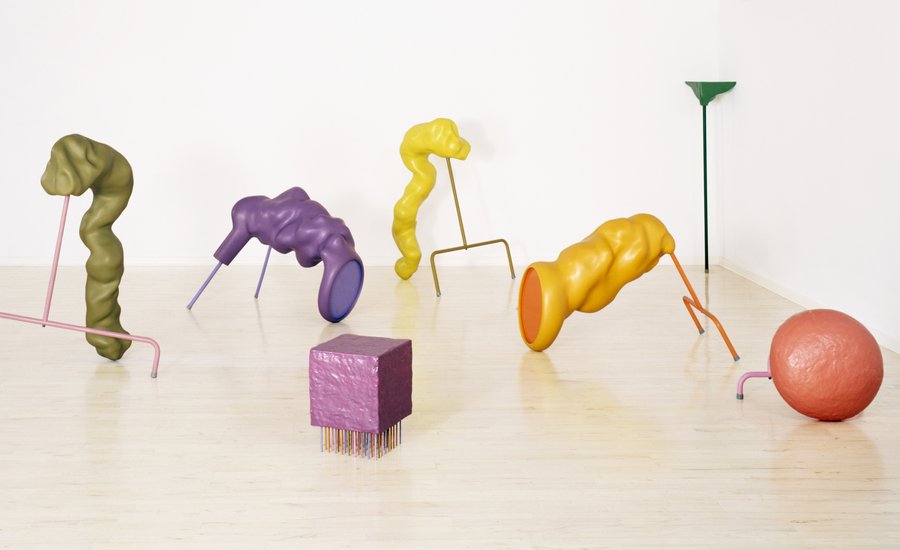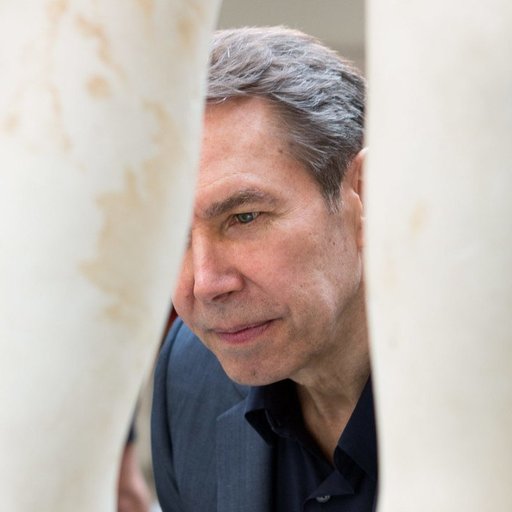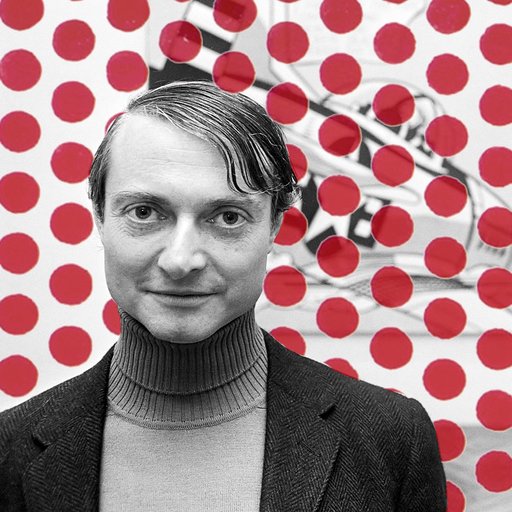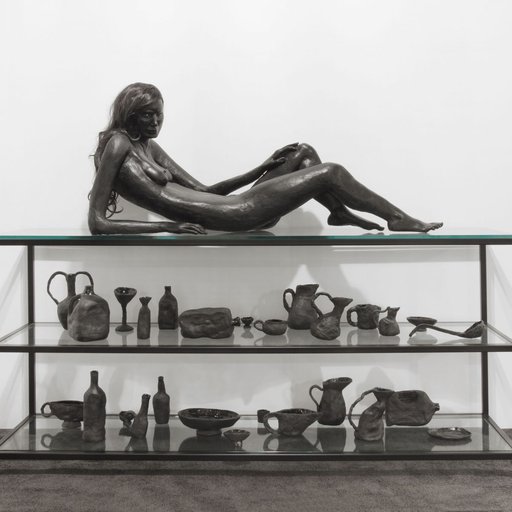Most people have encountered clay and ceramic at some point in their lives, whether it be molding a lumpy, lopsided bowl in a childhood art class or drinking a cup of coffee out of a ceramic IKEA mug. An abundant natural resource around the world, clay and ceramics have been used for centuries to create both sculptural renderings and functional objects. However, if we look at recent history, particularly in the Western hemisphere, clay has been used primarily to produce the latter, and has thus been disregarded as utilitarian; sophomoric; a preliminary step to creating 'real' sculpture; essentially 'Not High Art'.
But fear not, ceramic enthusiasts, as the pendulum is swinging clay back into the realm of valid art mediums. In an introduction to Phaidon's newly released compendium Vitamin C: Clay and Ceramic in Contemporary Art , curator Clare Lilley writes "the artists presented in this volume consider clay as core to their work or as a vital strand within a wider, multi-disciplinary practice... continuing the legacy of preceding generations, they have come to clay for countless different reasons and, in so doing, have collapsed distinctions between craftsperson, maker, sculptor, artist."
The newest addition to Phaidon's highly acclaimed medium-specific 'Vitamin' Series, the book features over one hundred contemporary artists working with clay in innovative ways ranging from sculpture to performance to installation. "Clay has become increasingly central in contemporary art," write Vitamin C editors Louisa Elderton and Rebecca Morrill, "and while many artists today are not formally trained in the medium's traditional techniques, instead they discover its physical satisfaction."
We've highlighted eight artists from the book who have work available on Artspace, and who reveal the versatility and tactility of clay, challenging the notion that ceramics must be functional, and breaking down the barriers between craft and high art.
---
 Big Rock Mountain, Blue Blob with Brown Drips
, 2015, Available for purchase $9000
Big Rock Mountain, Blue Blob with Brown Drips
, 2015, Available for purchase $9000
Surfaces are paramount in Nicole Cherubini’s work: from the delicate impression of fingerprints in clay to the decadent dribble of glaze. She creates assemblages in which materials of different types, shapes and weights are layered alongside one another, such that each may be appreciated in its own right. Astralogy (2013), for example, is comprised of a stack of objects positioned within an angular wooden structure; the solidity of the centre lightened by the surrounding architecture, which dissolves into line as the object is circumnavigated.
Creating space within and around her sculptures, Cherubini implicates the viewer and their own immediate context in her work. Its distinctly handmade quality ensures the artist remains highly present too. ‘There is almost a performative quality,’ she explains, with
clay cherished as a material that has a remarkable capacity for memory. Looking at this work, it is hard not to think of the process of its creation, as well as the rich history of complicity between women, clay and vessel shapes of this kind.
After gaining an undergraduate degree in ceramics at the Rhode Island School of Design in 1993, Cherubini was researching decorative arts from a feminist perspective at New York’s Metropolitan Museum of Art when she first began to consider the form of the pot—an object loaded with cultural signifcance—as a starting point for her work. Originally making small vessels to accompany photographs, she started to create increasingly elaborate forms with exaggerated handles, chains and surface texture.
More recently, the pot has become just one part of a wider repertoire of work, some of which is positioned in space itself while some is mounted on the wall. Works such as The Blues (2011) were created using the cardboard box that the clay arrived in—a simple gesture that transformed mere packaging into a mould. The result is a powerful shape softened by a subtly corrugated surface, accentuated by a wash of Yves Klein blue.
Other works veer further still from the traditional vessel, such as lady finger (2016), in which an extended hexagon is divided horizontally in two, with lengths of clay laid like ower stalks across the top. The simplicity of the form offers a reference to the prevalence of the hexagon in nature, notably in the beehive, where the tessellated shape allows for the most efficient use of wax, while maintaining the strongest possible structure. With the title in mind, the combination of forms reads as a meditation on contemporary femininity, rich in allusions to the history of women and artisanal crafts. As Cherubini remarks, ‘there’s always a pot in my studio ... without the pot, everything loses its meaning somehow.’
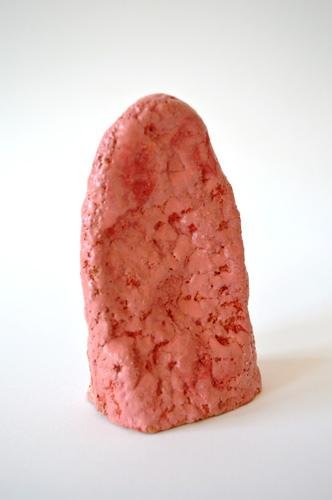 Mouldy Tongue
, 2013, Available for purchase $324
Mouldy Tongue
, 2013, Available for purchase $324
‘I realized that clay could be an exciting way for me to talk about mess or chaos: all the stuff photography protects us from,’ said Emma Hart in an interview for The New York Times in 2016. Her decision to begin working with clay marked a turning point in her practice, which had up until that point focused on the use of still and moving digital images, often displayed as part of installations and performances. Her perception of photographs as smoothed-down versions of the world presented a challenge: to reintroduce the messiness of life into and through the image, with sounds, phrases and words that interrupted themselves and images that overlapped each other.
The literal mess of clay, with its dust and liquidity and physical presence, adds to Hart’s attempts to bring the confusion of the outside world into the gallery space. The first of the clay objects that she produced, in 2012, was a tongue. Describing them in an interview at Camden Arts Centre in London in 2013 as ‘a kind of juncture of public and private’, these objects have reappeared in her ceramic work ever since, along with other body parts — arms, feet, ponytails — that exist independently of any complete figure. They are perhaps best described as appendages; corporeal references that, within her installations, are given a function that can be structural and narrative. In The Pits (2014) a group of arms extend from the floor, working as rickety supports for trays of wonky wine glasses teetering on the brink of collapse. In Dirty Looks (2013) tongues act as door stops, drawer handles and napkin holders, obscuring or revealing printed digital images or at screen monitors.
Images are also applied to slabs of clay, as in the surfaces of the trays in The Pits (2014), or across unfurling sheets that cascade from the wall in Low Ink Buy More (2015). Hart takes advantage of the weightiness of this medium to force images into the space next to us, cracking and folding and collaging themselves into our line of sight. A half-open door in Lockers (2015) reveals a close-up of a face, and a mirror that will also reflect the viewer’s own in similar proximity. A series of photographs applied to clay tablets or clipboards in The Private Eyes (2014) are visible only through the reflections caught by teardrop — shaped eyes hung on the wall above them.
Ceramic forms only a part of Hart’s installations, which operate as stage sets that must be navigated by the viewer, and which encourage a playful search for the origin of sounds that emanate from the bottom of drawers or for videos re ected in car wing mirrors. They are imbued with narratives that emanate from Hart’s own experiences (in a call centre, at a seaside Punch and Judy show, at a bar, celebrating the dissociation and exhilaration of having a child). Nevertheless, her use of clay, whether as a tongue or otherwise, provides the ‘juncture’ between the image, the object and our bodies. • Rebecca Lewin
 Blackened Plumeria
, 2016, Available for purchase $1500
Blackened Plumeria
, 2016, Available for purchase $1500
After early experiments with performance, Elizabeth Jaeger turned to making three-dimensional female nudes that stood in for her own body. The figurative sculptures, such as the series, Platinum Musing , (2011) were intended to create in the viewer the same kind of self-awareness that performance can: a presence that heightens one’s cognizance of a shared time and space. Crafted from ceramic and hydrocal (a form of gypsum that dries hard like plaster), the life-size figures strike both familiar and unusual poses. One is languorously sprawled on a gold lamé cushion; another is doing a handstand while balancing a bowl of fresh gardenias in her crotch. They are gestural and erotic, assertive and vulnerable. As surrogates for the artist herself, it is as if they say: ‘I’ll perform as you expect me to, but in the process I’ll show you what you’re really asking of me.’
If these early gures were surrogates for the artist’s body, a subsequent group of works replaced that body completely, substituting it with vessels. The transition was made in a work of 2013 titled Serving Vessels . A sculpture of Jaeger’s reclining body, composed and confrontational, is displayed atop and among an assortment of misshapen vessels. The table and shelving suggest a setting that is both domestic and clinical. The figure is there to be consumed and perhaps dissected, but the deep black finish of both the figure and the vessels gives the sculpture a funereal aura.
The matte blackness of many of Jaeger’s sculptures draws us in, their surfaces recording the artist’s gesture and touch. But Jaeger delivers these haptic objects on and within industrially fabricated steel structures: shelves, tables, pedestals and vitrine-like structures, the cold hardness of which contrasts with the organic character of the clay. This display strategy places distance between the vessels and both their making and their reception. Jaeger’s vessels are at once physical objects and stand-ins for the ideas of those objects; as such, they represent loss and mortality.
Jack Jaeger (Vessel #1–9) distorts the vessel to the point of dysfunction. Nine wide yet impossibly at vessels balance on steel sawhorses. Made in homage to Jaeger’s ailing grandfather, the black monochromatic sculptures are anthropomorphic and empathetic. They test the limits of the clay and they court collapse. In fact, each of the vessels is cracked. For Jaeger, the crack is not failure but rather a result of tension that she invites. She considers it an event that ‘occurs in the realm of the possible’. The realm of the possible is life and of course life also includes death. The flatness of these sculptures establishes a front and back, and they perform the most basic task of sculpture – of defying gravity – while drawing attention to their humble frailty. They stand together, an imperfect and precarious, but united, group.
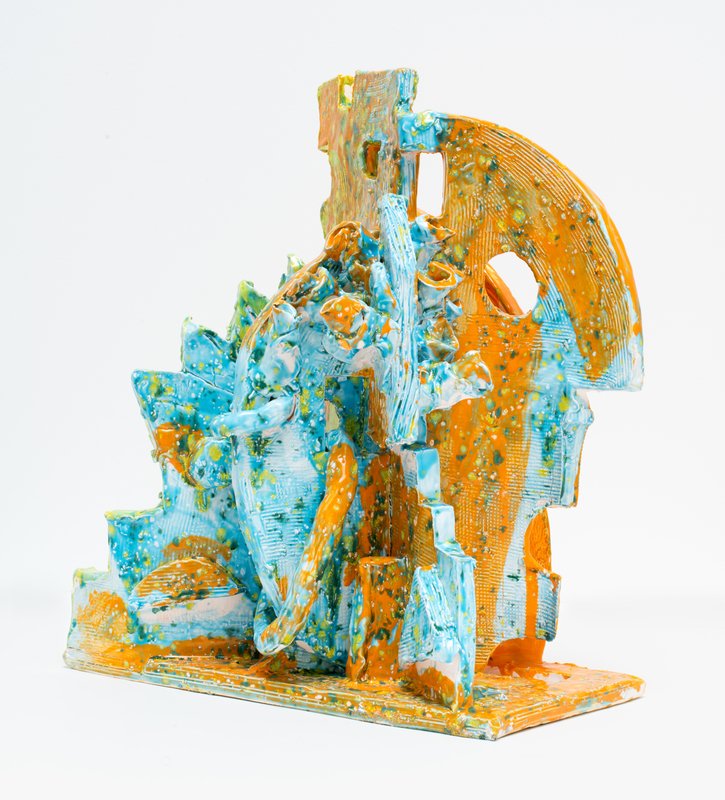 Untitled
, 2015, Available for purchase on Artspace
Untitled
, 2015, Available for purchase on Artspace
William J. O’Brien describes himself as a stranger to the ceramics world. ‘I offended crafts people,’ he says, having studied ceramics as a teenager at his local community art centre in Newbury, Ohio, and then as an undergraduate art student in Chicago. ‘I see ceramics representing the adolescent child in me, ceramics as the rebellious underdog of the art world,’ he reflects today. A prolific worker, his multiple clay forms are at once beautiful, bizarre, playful and deceptively simple. Presented alone, or en masse upon a large table, they reflect a vivid, uneasy interior world. There is a distinctive anthropomorphic quality to the artist’s works, some pieces suggesting human faces, bodies and limbs. Others are more ornamental and abstract in form, while some are stacked together as vertical, totemic columns.
Expanding on his ceramic works, O’Brien has also explored other media. Drawing is a mainstay, a two-dimensional parallel to his work in ceramic: simple, accessible, inexpensive and abundant. Autobiographical in theme, O’Brien’s early ceramic pieces reflect his interest in the nature and status of the medium, and its capacity to capture something of the artist’s own persona. ‘The hierarchy and economy of materials; the struggle in the self — what it means to be an outsider’ are driving forces for O’Brien, who describes clay as a rebellious medium: at once ‘polite and formal’ but also ‘visceral’.
O’Brien’s works, such as Untitled (2014), often take the form of ceramic heads, inspired by the artist’s own features, simply — even crudely — rendered. Quasi-abstract representations of the body, its weight and mass, draw inspiration from the tactile, sensual art of Louise Bourgeois and Annette Messager: ‘the autobiography of the body is in the materials,’ O’Brien has said. His religious upbringing and queer identity have been profoundly influential on his artistic identity, and he has described his project as trying to merge the sexual and the sacred. He also cites his relationship with his aunt, who had cerebral palsy, as significant, for her sophisticated non-verbal communication.
Following his undergraduate studies, O’Brien volunteered in San Francisco with Creativity Explored, an organization for artists with developmental disabilities. This led him to consider the hierarchies of insider/outsider art: ‘I questioned why the academy had its place holders,’ he says, leading him to ‘play with skill and non-skill’ through the use of inexpensive materials and simple, repetitive coloured-pencil drawings. ‘A big part of finding my voice was feeling I never belonged.’
More recently, his father’s death, and a significant studio re in 2012, saw O’Brien address themes of loss. Minimalism and the structuring device of the grid are also important, yet works such as Untitled (2016) are ‘bleeding with emotion’. The collaborative AIDS Memorial Quilt in Washington, DC, represents the intersection of the two – ‘the biggest minimalist work in the world’ — and he similarly tries to insert emotional content into his own art. The result is a practice at once humble and sublime, imperfect, yet emotionally spiky and true.
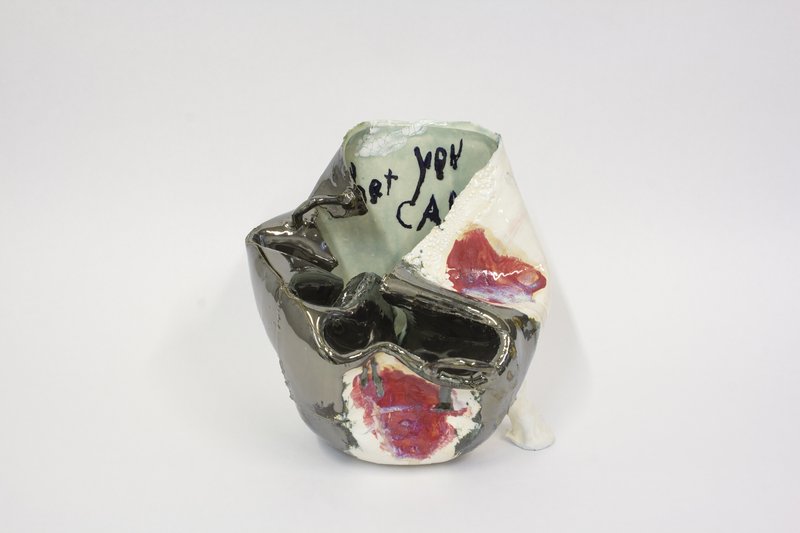 Affirmation Pot: Bet You Can Series
, 2014, Available for purchase $2000
Affirmation Pot: Bet You Can Series
, 2014, Available for purchase $2000
Looking at the work of the American artist Brie Ruais, the physicality of her relationship to clay is palpable. We can see the dynamism of her movements, her lived experience; how she likes to push the palm of her hand through this material spreading it outwards, or run her fingertips across it, channelling textured lines that pull the eye around, down or along her sculptures.
In Premonition (with India Ink and 130 lbs of clay) (2016) she kneels, naked, upon a bed of clay, spreading this into the shape of an X—a form that is mirrored in the cross that marks her own back (together, these equal XX, the female sex chromosomes). During a recent interview, she described her interest in contating the female body with a body of earth through a practice of ‘ecofeminism’, which she says ‘relates the oppression and domination of all subordinate groups (women, people of colour, children, the poor) to the oppression and domination of nature (animals, land, water, air, etc.)’. The work looks inwards at the body and its primordial physicality. It also centres on the traumatized body, while looking outward towards the land and the body’s relation to earth.
Ruais’ concern with gender results in sculptures reminiscent of the female X chromosome and the O of circles and holes.
Scraped Body Void, 130 lbs
(2016) is a wall-mounted ceramic, glazed in deep earthen tones. With a void at its centre from which clay is pushed outwards, it recalls a baking black sun of dark rays. Its form is powerful and bold, violent even, as clay is forced out of a void, bearing the marks of scratching or tearing, and embedded with finger and hand imprints.
Spreading Outward from Copper Center, 125lbs
(2016) is softer
and gentler, a thick, circular mass of wall-mounted clay, seemingly emitting beams of light as it shimmers beneath a warm metallic glaze.
Ruais always works within self-imposed restrictions: ‘I begin with a list of limitations that determine the weight of the clay (often equal to my own bodyweight), the action, the time, and the basic shape, and then confront the material with my body in a highly physical process that involves kneeling, kicking, spreading, scraping, and skimming.’ The forms are then cut into tiles, glazed and fired. These tiles are pieced together (often forming a grid) to give a sense of a fragmented whole, one that has the potential of being both ordered and disrupted. Area Whole, 300 lbs (2014) comprises a wall-mounted grid within which a giant hole appears. Its title uses word play, underlining both the positive and negative space of this hole (the void is mounted on the wall while the matter itself is on the floor, representing the ‘whole’ area and volume of the ‘hole’). Made using clay pigmented with colour—from teal to midnight blue, lilac to bubble-gum pink—sweeping, gestural strokes document how Ruais swiftly shaped this material. Finished with a clear glaze to highlight the tonal vibrancy, the work is characterized by its will to break free, away from the grid, constraint and order, ready to reconnect with the earth in the ground.
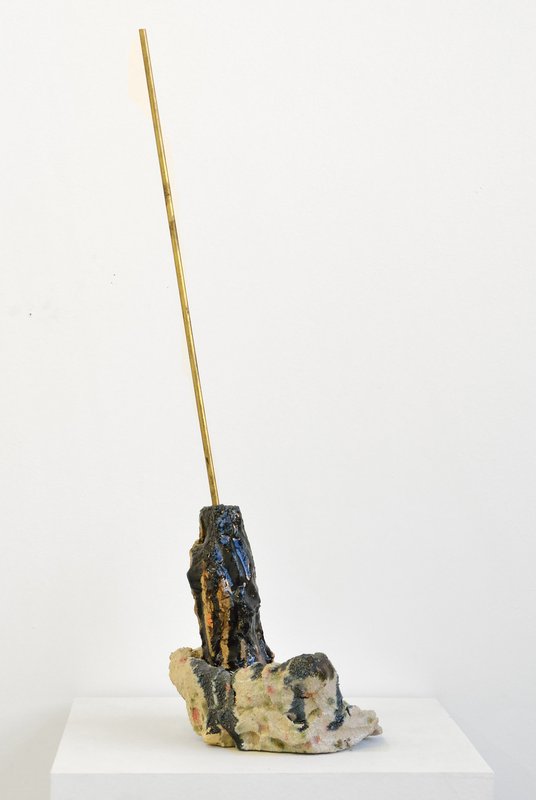 Untitled
, 2007, Available for purchase on Artspace
Untitled
, 2007, Available for purchase on Artspace
Sterling Ruby’s prodigious and conflicted output holds creation and destruction, expression and repression in a visceral balance. Ruby himself credits his rural childhood for that, describing himself as ‘a problematic kid who absolutely hated where I lived, which was this macho community in the middle of nowhere’. His response has been to apply a caricature of masculine vigour to the less expected zones of textiles and ceramics, just as much as to the more traditionally male fields of sculpture and painting, and to cite Amish quilt-making as an influence alongside urban punk and his previous streetlife as a skateboarder. Ruby’s paintings use a spray can until it splutters its streaky last, and his monumental ‘stalagmite’ sculptures arrest vast pours of urethane. Where do the quilts come in? There are soft sculptures too, and he’s a great recycler—the raw detritus of his studio floor feeds directly into the collages, and his clothes are made from offcuts.
All this comes together in Ruby’s ceramics, which take their cue from the amateur products of art therapy and make no secret of their transformative struggle into being. The one-off pieces have a crude, highly glazed free-form immediacy which emphasizes the malleability they’ve lost. To put it doomily, they’re memorials to a state which cannot be regained. In the ‘Basin Theology’ series, giant ashtray forms are filled with shards from misfired or damaged works. There’s no shortage of supply: Ruby, who’s been called an ‘anti-ceramicist’, admits he’s no great technician, and says thirty percent of his production explodes in the kiln. Everything in the shallow basins is fused under the pressure of subsequent reglazing and refiring, and we look down on what could be the finds from an archeological dig—indeed, says Ruby ‘the studio has become a kind of excavation site for me’.
What are we to take from this willfully messy aesthetic? There’s thrill and swagger here, but also redundancy and bombast. Ruby has said he ‘felt trapped by a kind of post-modern burden of ideas, theories, and histories. It seemed impossible to make a sincere gesture anymore. This was my monument to all of that.’ Paradoxically, perhaps, given how he hates his background, one might also be reminded of the communities left without purpose and pride following the loss of traditional male jobs in heavy manufacturing. Ruby seems to be maximizing the energies of that way of being, like one last flaring of a light before it dies. The stilled fluidities then stand for being stuck in time, for an inability to move on. Out of the stasis come the gangs, graffiti and vandalism which correspond to the broken aspect of Ruby’s ceramics.
 Glasur Stykke #9
, 2017, Available for purchase $4,200
Glasur Stykke #9
, 2017, Available for purchase $4,200
‘When I move, the clay moves.’ The phrase of sculptor Tony Cragg is one Anders Ruhwald is fond of. An emphasis on ceramics as a vehicle for selfhood was apparent in his 2014 show at Galerie Nillson et Chiglien, Hong Kong, ‘The view from the sides of my nose’. Inspired by the theory that the distorted form of prehistoric artefacts like the ‘Willendorf Venus’ were the result of female craftswomen looking down at their own bodies, Ruhwald explored the role of position in determining vision (try to see your own nose and the strange contours of
My Nose as Seen With my Eyes – version A & B
(2013) become understandable). Additionally, every work in the exhibition existed as a pair of ‘versions’;
Bowl (Black Hole) – Version A & B
(2013) comprised two straight-edged bowls glazed carbon grey, but one smooth as brushed metal, the other lumpy as porridge.
This same interest in variation was apparent in the exhibition ‘You in between’ at Oslo’s Kunstnerforbundet the same year. In one room stood two rows of largely amorphous forms, alternating in complementary shades of blue and orange. The two parades of objects mostly mirrored each other but for their surfaces, which in one row were smoothly finished, and in the other messy and finger-worked. A curtain hanging between the rows made direct visual comparison difficult, so the variation could be recognized only over time. Ruhwald seemed to imply that the business of subjectivity—the ‘You’ of the show’s title—arises in just this perception of differences, one that is both durational and spatially determined.
The use of the dividing curtain is typical of Ruhwald’s use of low-key scenography, often with a domestic avour. Head of Ceramics at the Cranbrook Academy in Michigan, for the installation Anatomy of a Home (2013) Ruhwald made discreet interventions in Cranbook campus’s Saarinen House, a jewel of Scandinavian Modernism. At the centre of the dining room, he placed a bowl on whose edge the glaze appeared to drip upwards. Suggesting time momentarily frozen—and/or, the slow accretion of stalagmites—the bowl resonated with the immaculately preserved surroundings of Saarinen House. Playing with such ideas through the language of decorative arts is typical for Ruhwald, for whom the messy practicality of objects is something to be embraced, not occluded; when installing ceramic lamp works at Middlesbrough Institute of Modern Art in 2008, he insisted on having them plugged into visible power points in the otherwise neutralized gallery space. Rarely appearing on plinths, his forms occupy a place equidistant from sculpture and design.
In 2014 Ruhwald began to create a sequence of apparently burnt-out environments inside a house in Detroit. The title,
Unit 1: 3583 Dubois
, corresponds to the new address assigned to the building after it was re-zoned by the city, which doesn't correspond with its location. The work serves as a metaphor for the decay and transformation of the city of Detroit as buildings continue to be burned or torn down. The large, rounded, monochrome ceramics, subsequently displayed at MOCA Cleveland, Ohio, in 2016, carry a mysterious charge, as
if ritual objects of an alien culture. Was one a radio dish, another a storage jar? What power might they hold, after the fire? For Ruhwald, the answers depend on whom you ask, and where you’re standing.
RELATED ARTICLES:
Why Does Phaidon's Vitamin P3 Survey of Contemporary Painting Matter?











